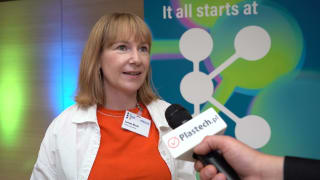
Whereas in the past only one category of product was usually run on aseptic lines, bottlers of sensitive beverages now face an ever-growing demand for flexibility. Beverage producers who process both aseptically filled beverages and juice and carbonated soft drinks need to use 38-millimeter bottle necks for the former and containers with 28-millimeter openings for the latter. If the bottle neck is to be changed on a PET line, however, to date a comparatively large amount of effort was required to convert the stretch blow molder in particular. Machines were often stopped for up to four hours, tying up the often very few operators of the same for a disproportionately long period of time. With its new, simplified neck changeovers KHS has now shortened the time needed to convert the InnoPET Blomax stretch blow molder - including the preform infeed.
It is usual to try to only manufacture and fill bottles with an identical neck on one line. If a water bottler wants to produce a still and a carbonated product alternately, until now it had to decide whether to use the higher and heavier neck really only necessary for carbonated water for both products or not. The bottler would then save time but waste material and money in the filling of the still water. The alternative would be to live with the long intermittent downtimes caused by a neck changeover. Besides these considerations, marketing often plays a role in a decision like this, calling for a bottle adapted to suit the various products. Combined lines such as these that require neck changes are very often found in Japan.

Different necks (source: Frank Reinhold)



